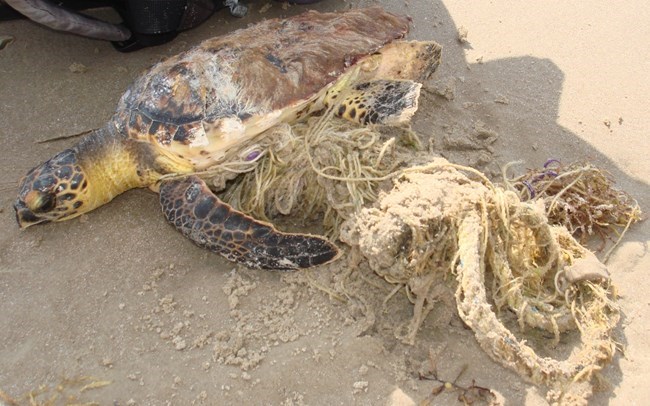The Sea Turtle Stranding and Salvage Network (STSSN) is a national network of federal and state agencies, authorized non-governmental organizations, and trained volunteers that document sea turtles that are found stranded in the U.S.A stranded sea turtle is one that is found washed ashore or floating, alive or dead. If it is alive, it is generally in a weakened condition and may be sick or injured. Live turtles are taken to rehabilitation facilities where they receive care, and many of them survive and are ultimately released. Dead turtles are often salvaged for necropsy. Samples can be collected from stranded turtles and shipped to requesting investigators for use in research that they are conducting. 
NPS Photo. Live stranded turtles found at Padre Island National Seashore are taken to nearby rehabilitation facilities like the ARK (Amos Rehabilitation Keep) in Port Aransas, the Texas Sealife Center in Corpus Christi, or Texas State Aquarium in Corpus Christi. When there is a large stranding event turtles are also taken to the Texas State Aquarium or Texas Parks and Wildlife Department CCA/CPL Marine Development Center in Corpus Christi. Padre Island National Seashore staff and volunteers participate in the STSSN. The Texas STSSN Coordinator maintains the records for sea turtles found stranded on the Texas coast and provides technical assistance and training to others in the state. 
NPS Photo. Sea turtles can strand at any time of the year. They may be sick or injured due to natural causes (like predator attacks) or have human induced injuries (boat strikes or entanglement in fishing gear.) In the winter when severe cold fronts move through the area, sea turtles can become hypothermic, an event called a cold stun. The STSSN, with the help of many volunteers, looks for, rescues, and documents cold stunned sea turtles.
|
Last updated: February 18, 2025
